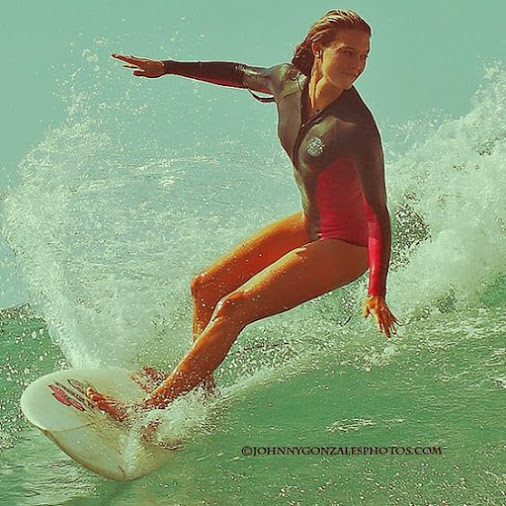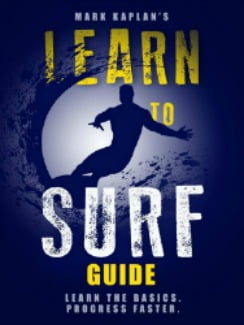Learning to surf the short board requires consistent practice and patience. Surfing is a slow progressing experience. Progress requires expert practice, physical development, learning techniques, and courage.
Beginners should start on a high volume soft top riding foam waves. They need to learn the exacting techniques that will be required on bigger waves and then real waves. Each step of progress requires more stamina, better judgment, more exacting techniques, and more courage.

Learning Surfing Short Board Fundamentals
There are several basic techniques that advance progressing from riding foam waves on soft top boards to riding real waves on short boards. Wave catching advances, judgment improves, surfing muscle and stamina improve, techniques improve, and courage builds.
The big difference between riding foam waves and real waves is the opening in time for catching the wave. The techniques are very similar, but a foam wave can be seen for a long time and a real wave opens and closes in a few seconds. Once a surfer has mastered the pop up catching waves on foam boards and then small real waves, he might want to start shortening his board length.
Patience should be exerted by shortening the board length just six inches at a time while maintaining width and thickness. When volume is reduced, the board is harder to paddle, less stable on the pop up, and less stable riding. Surfers don’t want to lose the fun while making progress. Truth is, a surfer could ride 7′ waves on an 8′ soft top surf board. The longer the surfer spends mastering techniques and carves on a good soft top, the easier it is to transition.
The first carves that can be practiced on real waves with a soft top are bottom turns, cut backs, and accelerating (pumping). Bottom turns are used coming off the face of the wave to carve into the pocket. They are used to ride up the face to perform a trick or maneuver (ripping the lip). Cut backs are used to reverse direction to get back to the power of the wave, for style, or maybe stalling waiting for a barrel .
Accelerating is very important on short boards. Whereas, a long board is mainly driven down the pocket, a short board has to be accelerated. Acceleration occurs when the surfer pushes the nose of the board up and down the face with his front foot. This can be practiced on soft top boards. Accelerating is necessary for getting ahead of the lip and to perform any maneuver. Then it is needed again for the next maneuver. Surfers will accelerate two or three times and then perform a trick.
Take time to make progress the right way and learn all the necessities. It is good to develop physically, watch video, read, and watch other surfers. You can ask advanced surfers how they perform certain feats. I have found, however, that they often don’t know. They just say “I just do it”. Then you might have to watch video or ask a coach. Good luck.
Learn More
My New Surfing Course in an E-Book plus Demo Video or Audio Version
Get the 18 Chapter, 7,500 word Course that can prepare you for a lesson or give you the fundamentals if you are going to try it on your own. 10 years of teaching 350 students a year has given me the insights on the most precise measures you must follow for success. This course is what I teach on the dry land and in water instruction. The Course includes a 15 minute video on my dry land and in water demonstration. Only $4.95
Buy the E-Book and start learning $2.99. Learn to Surf
Buy the Paperback on Amazon $7.95
Get Learn to Surf Course in 29 minute AUDIO. Great prep for a lesson, reviewing after a lesson, learning on your own, refreshing after not having surfed for a while. See Table of Contents. Only $7.95.

For Oceanside Surf Lessons, see the Home Page
See the Post Search Lessons Teach Fundamentals
See the Post Catching Real Surf Waves
See my Dry Land and in Water Demo video
See my other Surf site for more Posts
I have lowered the price of Courses and Books for the lock down price of $2.99
80 page Learn to Surf Book
![Surf Instructions Beginner to Advanced: Learn to Ride Waves by [Kaplan, Mark]](https://images-na.ssl-images-amazon.com/images/I/51HswFtoBQL.jpg)